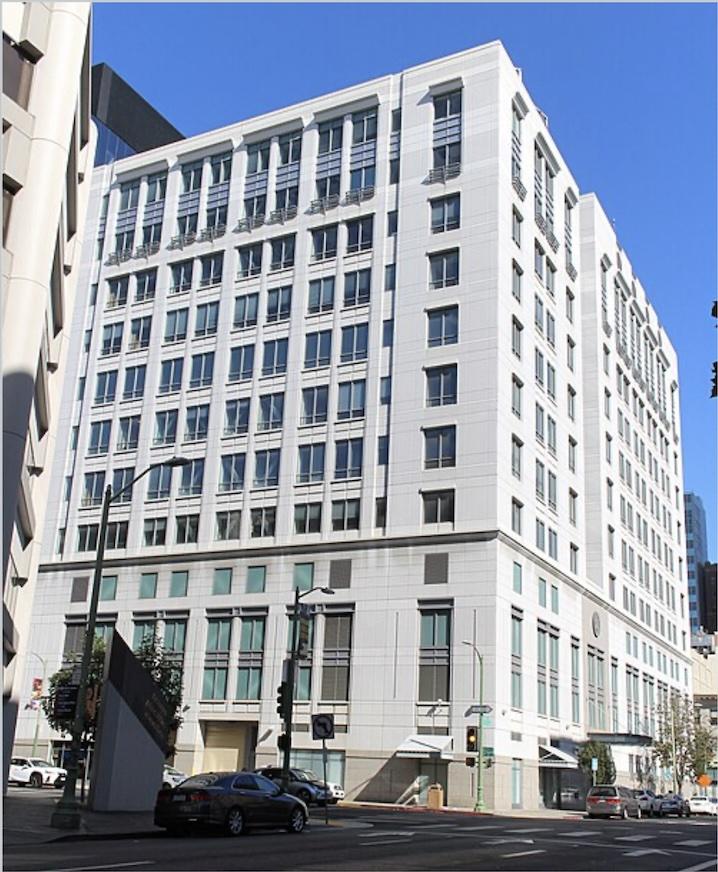This spring, Chevron workers testified that the company revoked health coverage for hundreds of members of the United Steelworkers Local 5 at the Richmond, California, refinery during a strike that ultimately lasted two months. Thousands of nurses at Stanford Health Care were told in April they would lose their health insurance if they did not return to work during their weeklong strike. More than 300 workers at Sequoia Hospital in Redwood City received a similar message after going on strike in mid-July as contract negotiations stalled.
Freezing health insurance benefits is a common tactic in a labor dispute because without them, workers might be more easily persuaded to concede to management’s demands. But California lawmakers are giving an edge to strikers.
Assembly member Jim Wood, a Democrat, is hoping a new California law he authored will dissuade employers from cutting off health benefits during labor disputes by allowing private-industry workers to maximize state subsidies for coverage purchased through Covered California, the state’s health insurance marketplace. The bill, which takes effect in July, was sponsored by the California Labor Federation, California Teamsters Public Affairs Council, and the Los Angeles County Federation of Labor.
“The goal of the legislation is to say, ‘No you can’t do this,’” Wood said. “Never try it again.”
According to Covered California spokesperson Kelly Green, eligible workers will have their premiums covered as if their incomes were just above the Medicaid eligibility level. The state would factor in the worker’s federal subsidy and cover the difference. For example, a single person making $54,360 a year may pay 8.5% of their income, or about $385 a month, on premiums under a middle-tier health plan. Under the new law for striking workers, that person selecting the same plan would pay nothing in premiums — as if that person made $20,385 a year — for the duration of the strike.
The federal government authorized an enhanced subsidy under the American Rescue Plan Act. The enhanced subsidy will continue through 2025 under the Inflation Reduction Act. The state’s share of the subsidy could increase once the federal boost ends.
One estimate that unions shared with the state suggested the law would cost California an average of $341 a month per worker — with strikes lasting one to two months. Labor groups estimate the bill will affect fewer than 5,000 workers a year. California has nearly 15 million workers in the private sector, and strikes are generally a tool of last resort in labor negotiations.
It’s not clear how businesses will respond. Chevron, Stanford Health Care, and Sequoia Hospital’s operator, Dignity Health, did not respond to requests for comment. The bill met no formal opposition from businesses or taxpayer groups. Covered California’s subsidies are footed by a mix of federal and state funds as part of the Affordable Care Act, so there’s no direct cost to businesses.
Last year, Gov. Gavin Newsom, a Democrat, signed the Public Employee Health Protection Act, which bars public employers from terminating health coverage during an authorized strike. The new law for the private industry is different: There’s no ban on — or financial penalty for — revoking health benefits during strikes.
Nationally, Democrats in the House and Senate have pushed for an outright ban on this practice, but neither bill has advanced out of committee.
When California workers lose their employer-sponsored health benefits, they may become eligible for the state’s Medicaid program, known as Medi-Cal, or qualify to purchase health insurance through Covered California. With the latter option, workers could receive a range of subsidies to help pay for their monthly premiums. Generally, the lower a household’s income, the bigger the subsidy.
But even when workers do qualify for Covered California, that insurance can be much more expensive than the plans they had through their job — sometimes consuming 30% to 40% of their income, proponents said. And striking workers may experience delays since coverage may not take effect until the following month.
“This is one of the drawbacks of having a health care system that is tied to employment,” said Laurel Lucia, health care program director at the University of California-Berkeley Labor Center. “We saw during the pandemic, when there were furloughs or layoffs, people lost job-based coverage when they needed it most.”
Striking Sequoia workers reached an agreement with Dignity Health and returned to the 208-bed facility before health coverage stopped on Aug. 1, but some said they might have stayed on the picket line longer if not for fear of losing their benefits.
“That was pretty scary,” said Mele Rosiles, a certified nursing assistant and a member of the union’s bargaining team who was pregnant at the time. “A majority of our workers felt threatened by this move from our employer to strip our family’s health insurance if we didn’t return to work.”
The California Association of Health Plans raised concerns over an early version of the bill that sought to establish a category for striking workers, but the industry group dropped its opposition once it was determined that Covered California could administer the change without it.
Covered California estimates it will spend about $1.4 million to launch this benefit. The agency said it will create application questions to screen for eligible workers and remind them to stop coverage once they go back to work. (Annie Sciacca/California Healthline)
KHN (Kaiser Health News) is a national newsroom that produces in-depth journalism about health issues. Together with Policy Analysis and Polling, KHN is one of the three major operating programs at KFF (Kaiser Family Foundation). KFF is an endowed nonprofit organization providing information on health issues to the nation.







